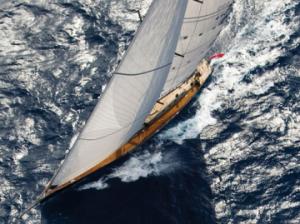About the town
Korcula is known for its outstanding cultural and historical heritage and a long tradition in seafaring, shipbuilding and stone-masonry. It is the birthplace of the adventurer and traveller MARCO POLO...
KORCULA, a town and port on the north-eastern coast of the island of Korcula, situated on a small peninsula which is connected with the island by a narrow isthmus. Economy is based on farming, growing of vines, olives and fruit, fishing, shipbuilding, stone processing, tourism and nautical tourism. The port consists of the western and the eastern part. Korcula Marina is located in a cove on the eastern side of the town.
The town of Korcula, the historical centre of the island, has a very nice location in the Peljesac Channel. It is also known for its outstanding cultural and historical heritage and a long tradition in seafaring, shipbuilding and stone-masonry. It is the birthplace of the adventurer and traveller Marco Polo. Today Korcula is an important tourist centre. Tourism has a years-long tradition on the island. The first modern hotel, Korcula, was opened in 1912, in a building erected in 1871. Hotel guests have been enjoying the sunset at the hotel terrace for decades, which is a unique experience in the early summer.
Visitor opportunities of the island of Korcula include various types of accommodation - hotels, apartments, campsites, marina; sports and recreational facilities, especially interesting are water sports; organized excursions and a rich cultural life and entertainment programs. Cultural events of "Moreska" and "Kumpanija" have become world-famous.
Gastronomic offer includes famous fish specialities and exquisite, top-class local wines (Posip, Rukatac, Grk, Plavac), due to which Korcula is also called "the island of wines". The local cuisine is also famous for traditional cakes and sweets, such as "cukarini", "krostule" and "prikle".
The most important cultural event is the traditional chivalrous game called "Moreska". It has been performed in Korcula since the 15th century and is of Spanish origin. It is a battle between the army of the White King and the army of the Black King, who fight for the princess abducted by the Black King. After a fierce fight with swords, in seven battle figures and a dramatic dialogue, the White King defeats the Black King and sets the princess free. The fight is accompanied by a battle march performed by a brass band.
Moreska is performed every year on the 29th of July, together with the celebration of St. Todor, but also on several occasions during the tourist season.
Other traditional feasts in Korsula include the carnival, which starts on the Epiphany, and the Holy Week, with the procession of guilds - especially impressive is the procession on Good Friday. Many cultural and sports events take place during the summer months: music festivals, theatre and folk music performances, sports contests, yachting regattas, etc.
A neo-Baroque stairway (1907) leads from the pier along the open loggia (1584) to the old part of the town. In the middle of the square is the cathedral of St. Mark (only the apses of three naves have been preserved of the original cathedral from the 14th c.). This Gothic structure was finished at the end of the 15th century in the transitional Gothic-Renaissance style.
Opposite of the cathedral is the deserted Arneri palace, built in the ornate Gothic style, with a nice Renaissance cloister. Next to it is the Gabrielis palace, built in Renaissance style (16th c.), in which in 1957 the Town Museum was opened, with various exhibits related to shipbuilding, seafaring and stone-masonry of Korcula, and an art gallery. Next to the cathedral is the Bishop's palace built in the transitional Renaissance-Baroque style (17th c.), with the rich Abbey Treasury, established in 1954, which features liturgical vessels and mass vestments.
On the small square is the Municipal Hall (ground floor with arcades from 1525, the first floor added to it in 1866). Next to it is the chapel of Our Lady of Ploce, erected in 1531 to commemorate the battles of Aragonians and Venetians in front of Korcula in 1483.
From the old part of the town of Korcula, the gate called Kopnena Vrata (Gate of the Mainland) (1650) leads trough Revelin, a monumental tower of a quadrangular ground-plan (1493-1496), to the bridge. This is the beginning of the way along the former town ramparts. Following this way, one reaches the church of All Saints (beginning of the 15th c., later restored). In the northern part of the peninsula is the semicircular Tiepolo Tower, and on the western coast, at the brim of the pier, the Barbarigo Tower.
The western coastal way, along a small cove, leads to the Dominican monastery with the two-nave church of St. Nicholas the older nave was finished around 1505 and reconstructed in 1665. The right nave features the altar palla The Martyrdom of St. Peter the Martyr (old copy of Tizian's painting), while the new nave houses the Baroque altar of St. Nicholas (1629). The monastery possesses a collection of works of art.
From the outskirts in front of the Gate of the Mainland the way leads to the Hober park and the fortress of St. Blaise, erected in 1813 by the English (Fort Wellington), on a hill which dominates above the town. In the outskirts called Biline is the classicist octagonal church of St. Justin.

HOT DEALS !
get the best deal
& the best yacht
Home / About Croatia / Adriatic Sea - regions / Adriatic South / Islands / Korcula / Towns / Korcula / About the town